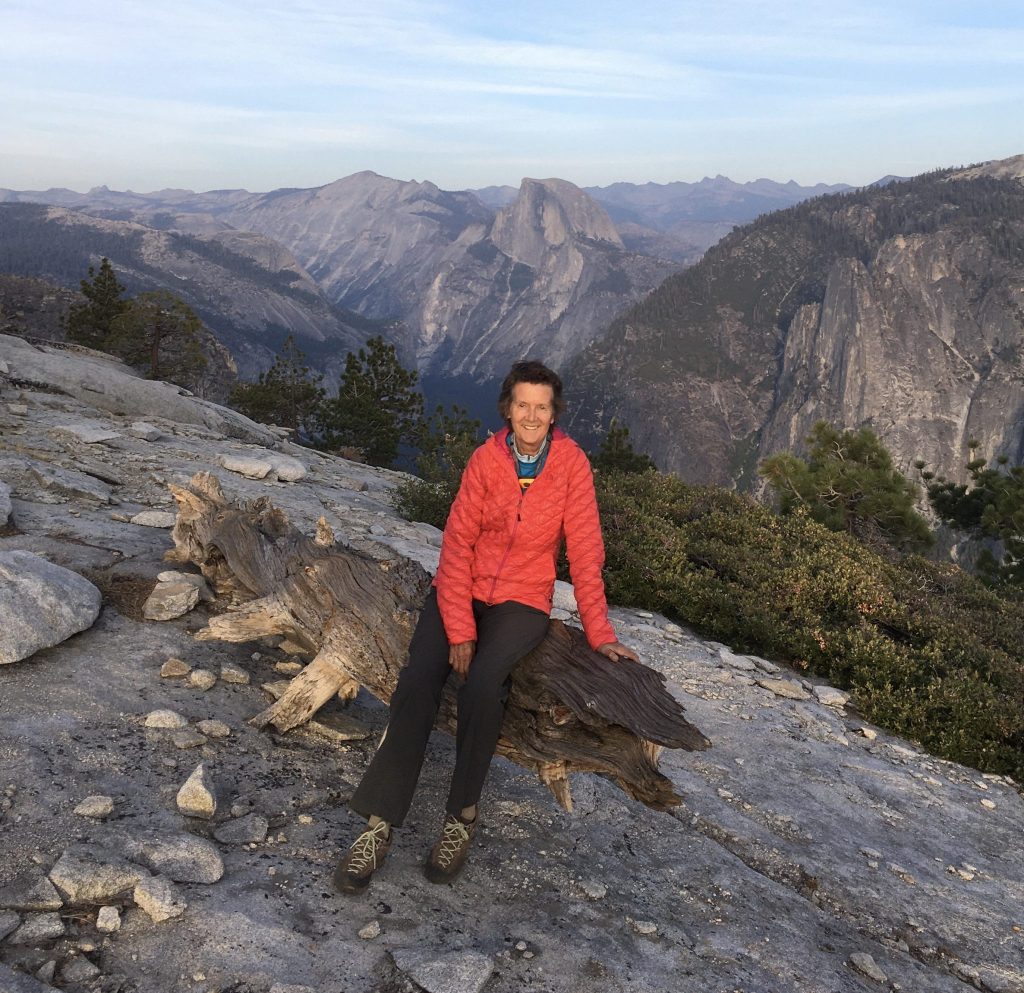
My head is still working hard on El Cap (see last blog of 10/27). People always ask me how much work it is to climb a monster wall like El Cap. “Climb”, of course, is sometimes a contested word. Elite climbers don’t acknowledge what we did as ‘climbing’. The dictionary does, however, and as a linguist, that’s good enough for me.
Any way you do it, going up El Cap is a lot of work! Here’s how we did it.
First section, from the ground — a couple hours of gnarly scrambling through woods for the lower 800 or so feet of four-point hiking, using hands and feet to progress through forest trails, over streams strewn with boulders, up rocks.
Next section — an hour or so (for me; I’m slow) of jumaring, or ascending ropes using mechanical ascenders — which is remarkably strenuous! — on the four vertical sections of granite, covering about 1,000 feet.

2nd section — working hard on the ropes.
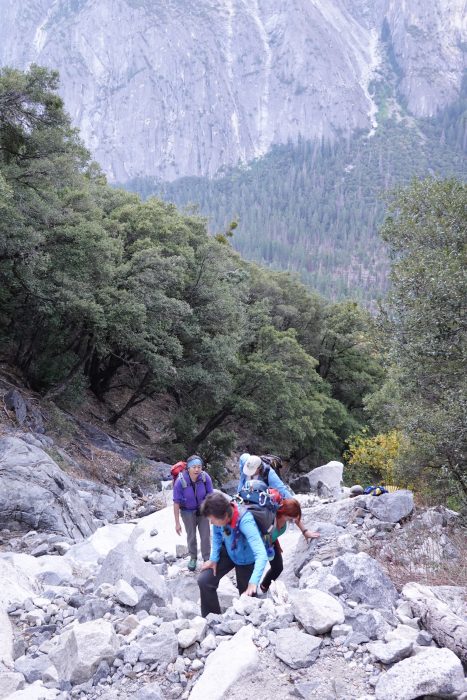
Nearing the top of the first section, leaving the forest behind us.
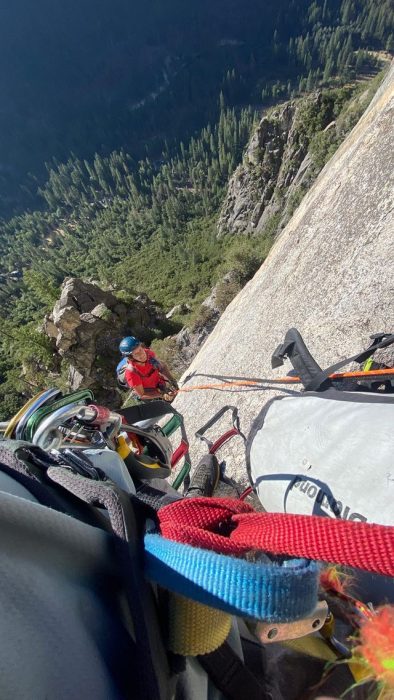
Last section — For the last couple thousand feet before the summit, you push your way through prickly manzanita ‘forests’, over boulders, some of which are so demanding there are hand-ropes (especially welcome on the descent!), and across and up many, many long, sloping, steep, slippery, scree-strewn slabs of rock. These slabs are unprotectable, that is, there are no features, cracks, etc. where one might place protection, attach a rope, or do anything that might help someone ascend. You just have to walk it, yourself. And try not to think too much….
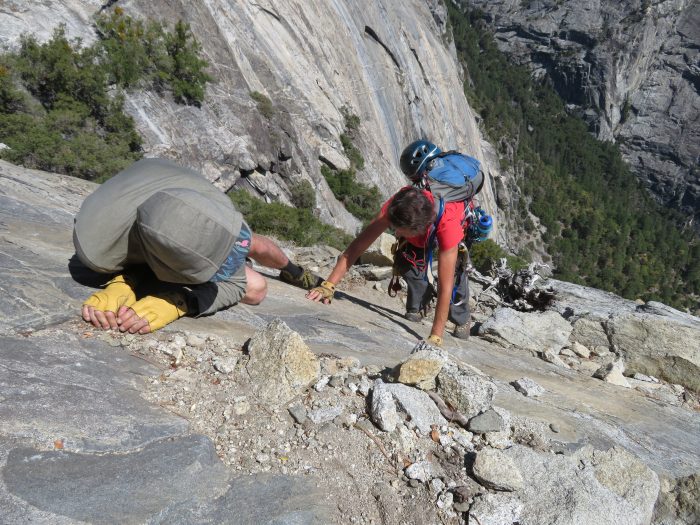
Jake Myhre giving me beta — info — on how to navigate the slabs.
Because the hardest part of the unending slabs at the top is not walking up them. The real test is not allowing your mind to acknowledge what will happen if you stumble. If you catch your toe, or trip. Down you’d roll, no doubt breaking bones against all the bumps and lumps of rock, until you sail out over the edge, into the air 3,000-foot above the valley floor. That’s the hard part. For me.
As a new climber, just a few years ago, that was always my hardest struggle when my new group of climbing friends took me outdoors to climb. Climbing isn’t really dangerous unless you do something stupid. Something careless. That’s when bad things happen, up there. And I knew that I didn’t know enough yet to be as thorough as I needed to be. I was painfully aware of what I didn’t know. As Mom, the oldest climber out there (usually), I knew enough to hold back, to wait and let the others do it first and show me how. That’s how I learned.
But even at my most careful, my mind still conjured up images of what could happen if…. That vivid writer’s imagination would take hold, and I’d spend much too much time talking myself out of listening to it. As I had to do up on the slabs of El Cap.
But I did. We all made it, all 10 of my friends and me.
I never could have had that adventure without them —

The whole gang
to train with, to encourage me, to carry the heavy things we all needed in order to camp on the summit.
I’ll always be grateful to them for that.
So the Champagne glass I lifted on the summit — I still can’t believe Garet carried bottles of Champagne in his haul bag!! — was partly for my 70th, but mostly for you, all of you. Thank you! I look forward to our next adventure together!
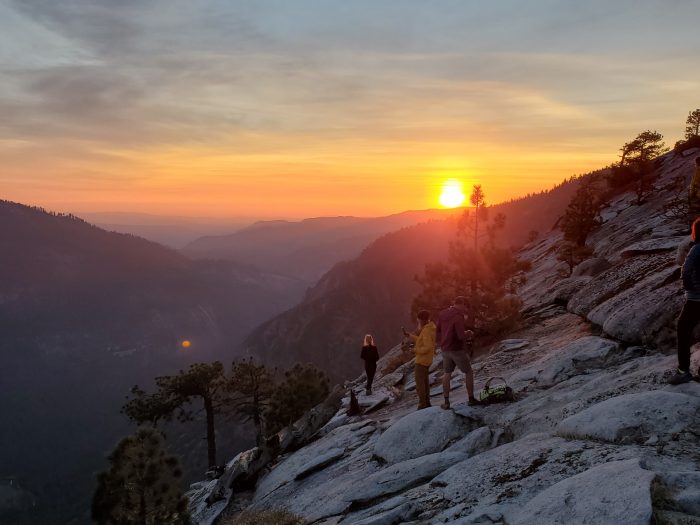

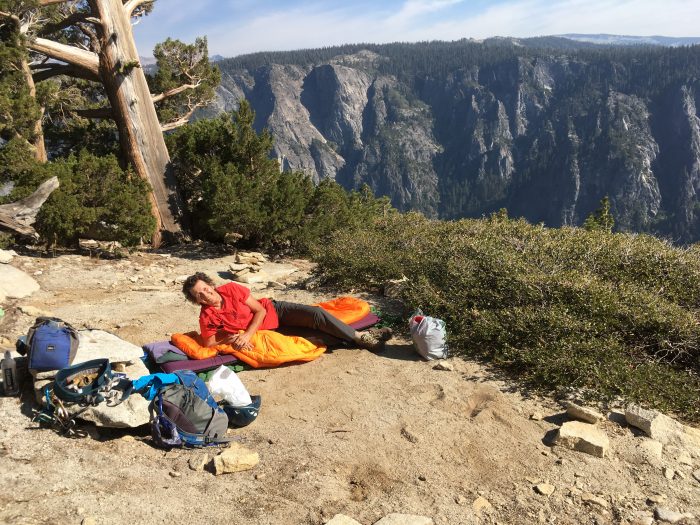
I’ll never ‘top’ that as a camping experience or a birthday party!
© Copyright 2025 Dierdre Wolownick All Rights Reserved.